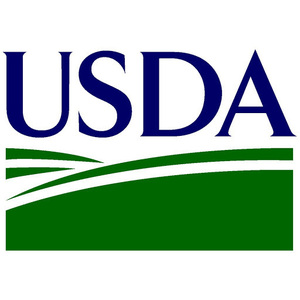USDA offers more than $1 billion in REAP funding

April 3, 2023
BY Erin Krueger
The USDA on March 31 announced it is making $1.055 billion in grants available under the Rural Energy for American Program to help agricultural producers and rural small businesses invest in renewable energy systems and make energy efficiency improvements. The REAP funding was allocated by the Inflation Reduction Act, which was signed by President Biden in August 2022.
“Supporting renewable energy and energy-saving systems helps the people of rural America create thriving, livable communities,” said Agricultural Secretary Tom Vilsack. “When we invest in rural communities, we are supporting hard work that sends a ripple effect across our country. Clean energy is critical to the future of our economy, and the Inflation Reduction Act provides the Biden-Harris Administration with the resources to build a more prosperous rural America while tackling the climate crisis and lowering energy costs.”
The IRA provided more than $2 billion in funds for the REAP program through 2031. The USDA is offering $1.055 billion through six quarterly competitions that will be held throughout the remainder of 2023 and 2024.
The REAP program was first created by the 2008 Farm Bill to award grants and loan guarantees to agricultural producers and rural small business to purchase and install renewable energy systems and make energy efficiency improvements to their operations. Eligible renewable energy systems include renewable biomass, including anaerobic digesters and biogas, wind, solar, small hydro-electric, ocean, geothermal, or hydrogen derived from any of those sources.
Advertisement
Advertisement
According to the USDA, numerous changes are being implemented to the program with inclusion of funds from the IRA. Changes include increasing the maximum grant size from $250,000 to $500,000 for energy efficiency products and from $500,000 to $1 million for renewable energy systems.
The agency is also raising the federal share to 50 percent for all energy efficiency projects, all zero-emission renewable energy projects, and all projects in designated energy communities and projects submitted by eligible tribal entities. All other projects are eligible to apply for grants of up to 25 percent of the total project costs.
In addition, the USDA is creating an Underutilized Technology Fund with an initial infusion of $144.5 million for zero-emission renewable energy technologies which made up less than 20 percent of the project pool two years previous to the application year. For fiscal year 2023, solar, biomass, biogas and energy efficiency projects do not qualify for the Underutilized Technology Fund. All others are eligible.
The USDA is also taking action to ensure that small projects have a fair opportunity to complete for funding by setting aside at least 20 percent of the available funds until June 30 of each year for grant requests of $20,000 or less, including the grant portion of a combined grant and loan guarantee request.
Advertisement
Advertisement
Related Stories
CoBank’s latest quarterly research report, released July 10, highlights current uncertainty around the implementation of three biofuel policies, RFS RVOs, small refinery exemptions (SREs) and the 45Z clean fuels production tax credit.
The U.S. Energy Information Administration maintained its forecast for 2025 and 2026 biodiesel, renewable diesel and sustainable aviation fuel (SAF) production in its latest Short-Term Energy Outlook, released July 8.
XCF Global Inc. on July 10 shared its strategic plan to invest close to $1 billion in developing a network of SAF production facilities, expanding its U.S. footprint, and advancing its international growth strategy.
U.S. fuel ethanol capacity fell slightly in April, while biodiesel and renewable diesel capacity held steady, according to data released by the U.S. EIA on June 30. Feedstock consumption was down when compared to the previous month.
XCF Global Inc. on July 8 provided a production update on its flagship New Rise Reno facility, underscoring that the plant has successfully produced SAF, renewable diesel, and renewable naphtha during its initial ramp-up.
Upcoming Events










